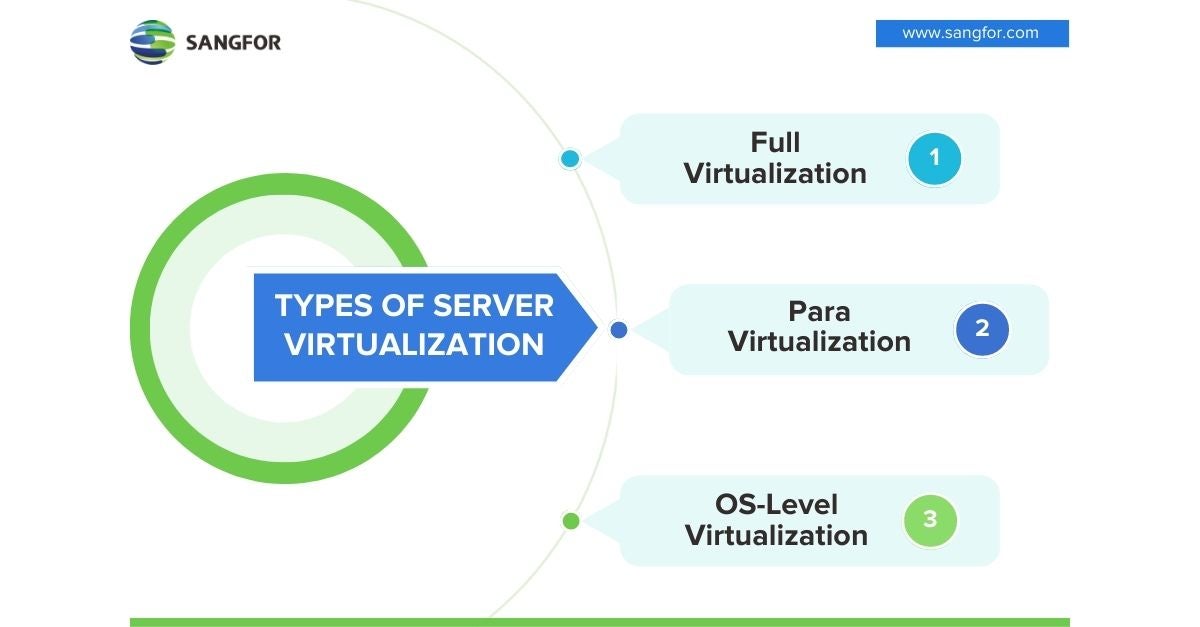In 1997, Douglas Engelbart predicted that in 20 or 30 years, you'll be able to hold the computing knowledge of the whole world in your hand. In 2023, we can see exactly how true those words rang. The data center industry has grown a lot within the last few decades and is expected to continue expanding well into the future. As more companies move towards digital transformation, the need for advanced and accessible computing solutions become more necessary – such as server virtualization.
What Is Server Virtualization?
Server virtualization is basically exactly what it sounds like – the process of making your servers virtual - or simply, making everything digital. Instead of having one physical server that processes all your data, server virtualization gives you multiple virtual servers that each have their own primary function.
Guest operating systems operate on their own and in isolation from each other. They take commands from a central virtual server known as the host operating system. This keeps the server’s resources secure from its users. Server virtualization solutions made it possible to have efficient and resource-conscious processing power. Most hardware operating systems in use these days don’t even realize their full potential, making the option of virtualization an even better investment.

How Do Server Virtualization Solutions Work?
For server virtualization to work, a virtual software must be created – called a hypervisor. The role of the hypervisor is to create a barrier between the virtual, or digital, elements and the physical resources, such as the processors, CPU, RAM, and so on.
After installing the hypervisor on the main device, the virtualization software can then be used to emulate each physical resource and create a new virtual server on top of it. It can replace a single physical server or the entire stack of multiple physical servers. Hypervisor software also creates and runs multiple Virtual Machines (VMs). This type of virtualization requires certain customizations depending on the client’s needs – which is why they can be grouped accordingly.
Types of Server Virtualization Solutions

There are 3 types of server virtualization, each with its own level of isolation and ability to mimic hardware resources.
- Full Virtualization: First is the full virtualization mode - which is the most independent. In this form of server virtualization, the hypervisor software makes sure that every virtual server is entirely isolated and unaware of each other. This virtualization software monitors and sends information and resources directly from the physical server while still running on its own – an advanced feature that might slow down processing and performance.
- Paravirtualization: Next is paravirtualization - a more flexible option. In a paravirtualization server, the operating systems are aware of each other yet they can communicate with the hypervisor directly through ‘hyper calls’ – enabled by an effective Application Programming Interface (API). This type of software virtualization is more unified and efficient, and doesn't need as many computing resources as full virtualization. However, it still delivers better performance by enabling direct communication between servers and the hypervisor.
- OS-Level Virtualization: Lastly, the virtualization at an OS level allows the use of multiple virtual spaces. The term "containerization" refers to a type of virtualization that doesn't need a hypervisor. Instead, it uses the host operating system's own virtualization capabilities as the hypervisor. Processing is done within the ‘container’ – or virtual space for each server – but is limited to the resources given. This virtualization method is also restricted to having the same operating system as its host to function.
The Benefits of Server Virtualization
Technology is all about making life more convenient and that is why server virtualization exists. There are many reasons to switch over to a server virtualization solution for your enterprise to succeed. Some of the main benefits of server virtualization include:
Lower Costs
Naturally, the immediate advantage of server virtualization is its cost efficiency. IT infrastructure and server hardware can be expensive to maintain and operate – especially on a large scale. Most physical servers don’t even reach their full potential and function more as an expense than an asset to companies. Switching to a virtual environment means dealing with less demanding operating systems and a drastic reduction in hardware costs. The simplicity of the virtual design also relies on fewer servers to meet its requirements – thus saving money on expansion.
Reduced Server Complexity
A one-stop server virtualization solution makes everything simpler as well. With a single pane of glass operation, the management and monitoring of every virtual server is controlled from one place. This reduces the need for IT training and expert advice to maintain and operate the servers.
Increased Performance
Server virtualization divides servers into individual systems and allows them to act independently. This improves the performance of application processing. Additionally, virtualization lets you run different operating systems on the same hardware – allowing you to host applications specific to that OS.
Efficient Resource Usage
As mentioned earlier, physical servers can waste company resources with unnecessary hardware. The processing power needed for server virtualization is much less than the amount of energy and costs of running a physical data center. Server sprawl also heavily affects physical data centers - this is when new infrastructure is brought in and the old hardware goes unused while still being an expense. A virtual server environment ensures that your enterprise uses its resources efficiently, with less wastage.
Scalability
Virtual servers increase storage capacity and control. They provide a flexible and scalable digital environment that can be easily increased, updated, or moved as needed. You’ll never have to deal with more server infrastructure than you need or can manage with a virtualized IT environment - this also makes it more suited to cloud-based solutions. When using a virtualized server, your business continuity is guaranteed. Remote access to your servers will ensure that your operating system never fails. Additionally, server virtualization will open your business up to more cloud services that will enhance your network’s capabilities.
Rapid Deployment
Finally, the use of virtual servers improves productivity in your IT department. Servers can be seamlessly and automatically deployed as needed – increasing the speed of work being done. Likewise, servers can also be quickly decommissioned once they exceed their usage and are no longer needed. This automated and controlled environment also makes virtualized servers the perfect place for app development. While the many benefits of server virtualization seem attractive, changing your system can be difficult if you don’t have the right tools and services. Sangfor boasts innovative server virtualization technology that will enable a smooth and effective transition.
Sangfor’s Server Virtualization Solution: Hyper-Converged Infrastructure
Sangfor Technologies offers cloud computing and cybersecurity solutions that focus on practical preparation and strategic alignment.
The Sangfor Hyper-Converged Infrastructure (HCI) is a server virtualization solution. It has been recognized by Gartner as a server virtualization platform of choice due to it being an innovative 3rd generation platform that converges computing, storage, networking, and security into a single software stack. It provides a simplified 1-stop software-defined data center solution that is tailored to business-critical applications. The platform also provides extensive backup capabilities and data protection. Watch the introduction video to learn more about Sangfor HCI.
Additionally, Sangfor’s Cloud Platform offers a dependable and efficient automated cloud computing solution that simplifies the process of constructing and managing cloud data centers through standardization and a focus on processes.
Make Sangfor Technologies your partner of choice when seeking out a reliable, affordable, and effective server virtualization solution. For more information on Sangfor’s cyber security and cloud computing solutions, visit www.sangfor.com.





